Facilities
Technological laboratory
Equipment:1) Pulsed Laser Deposition (PLD) system, dedicated to the growth of oxide films (superconducting and magnetic).
The system contains laser ablation chamber Pioneer 120, produced by Neocera (1994, USA), and Nd:YAG pulsed laser, type QuantaRay Pro 350-10, produced by Spectra-Physics (2008, USA) with forth harmonic generation (wavelength 266 nm), and pulse energy up to 400 mJ.
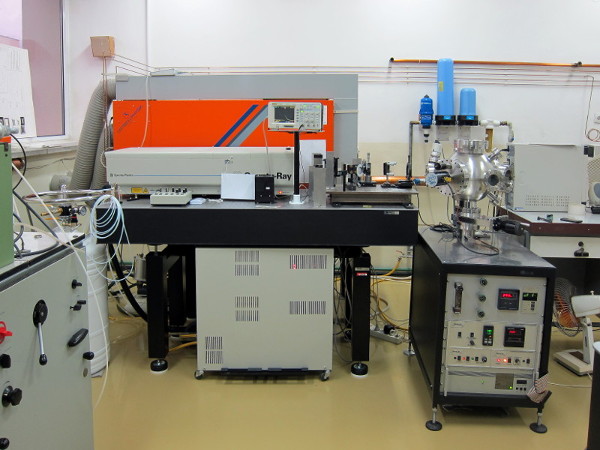
2) Vacuum systems: for high-frequency plasma etching and ion milling
3) Contact photolithography system
4) Systems for thin metallic layer deposition: evaporation chamber, and compact sputtering system
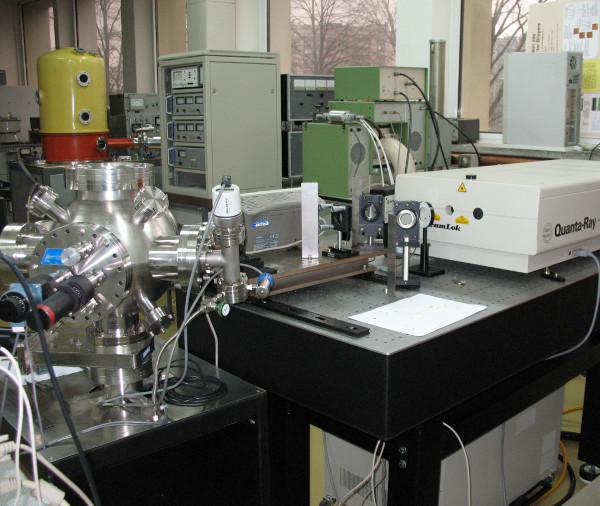
Physical properties measurements
Magnetooptical system for imaging in polarized light
Equipped with polarizing microscope, type DM-RXP, produced by Leica (Germany), and CCD camera type ORCA C4742-98-24ERG, produced by Hamamatsu (Japan). The samples may be cooled in the continuous-flow cryostat, in the presence of low magnetic fields up to 600 G.The system is used for imaging of magnetic flux entering superconducting films or crystals, in the temperature range between 3.5 K and 325 K. The principal idea for imaging is a Faraday rotation in a magnetic sensor placed directly on the top of the investigated sample. In addition, apparatus for transport measurements, integrated with the system, may be used simultaneously, allowing for evaluation of the influence of transport currents on the distribution of the magnetic flux inside the superconductor.
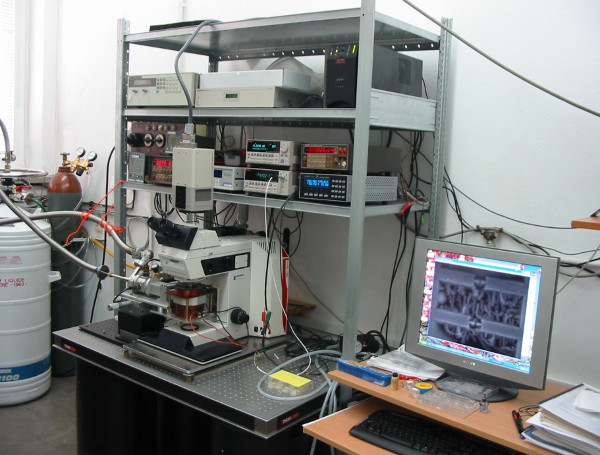
PPMS (Physical Property Measurement System), produced by Quantum Design
This is an open architecture, variable temperature-magnetic field system designed to perform automated measurements of various physical properties. The basic part consists of superconducting magnet and low-temperature cryostat, allowing for the measurements in wide field and temperature ranges, with the following features.• Magnetic field in the range 0 – 9 Tesla;
• Sealed sample chamber with 2.6 cm diameter sample access;
• Versatile sample mounts which couple easily into cryostat insert;
• Temperature range 1.9 K do 400K (basic version), including long-term stabilization, and the temperature sweep modes; Helium-3 Refrigerator expands the temperature range to 0.5 – 2 K (compatible with electrical transport and heat capacity measurement options).
• Microprocessor-based device for the control of the field, temperature, and current sweeps, and for the data registration and analysis;
• A possibility of integrated control of external instruments for user-defined experiments.
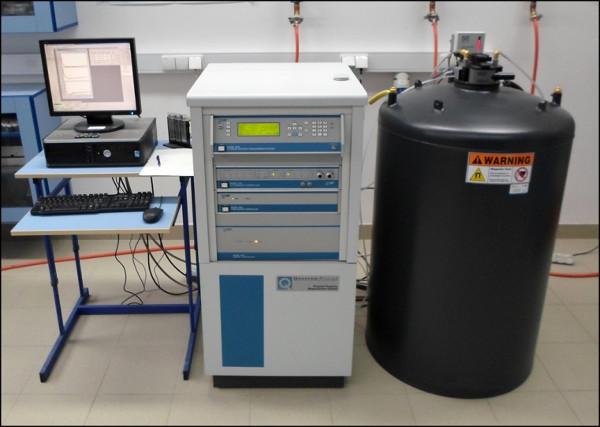
System for magnetotransport measurements
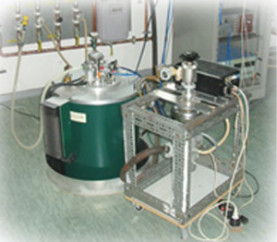 This system is a joint property of IFPAN and Institute of High Pressure Physics PAN (Unipress). The system is equipped with Cryogenics 14 Tesla magnet and cryostat for measurements in the temperature range 1.5 K to 300K, and apparatus for transport measurements.
This system is a joint property of IFPAN and Institute of High Pressure Physics PAN (Unipress). The system is equipped with Cryogenics 14 Tesla magnet and cryostat for measurements in the temperature range 1.5 K to 300K, and apparatus for transport measurements.Other equipment and systems under construction
The laboratory is equipped also in Faraday cage for filtering out the noise during the measurements, and in several small cryostats and inserts for quick evaluation of the resistivity and ac-susceptibility of thin films.In addition, two new measurement systems are under development:
The system for studies of local magnetic fields using a line of miniature Hall sensors. This is a method for the evaluation of the distribution of magnetic flux inside the superconductor, complementary to magnetooptical imaging, but about 10 times more sensitive. The sensors are placed 20 μm apart, on the surface of the sample. The measurement of the local magnetic field is run simultaneously by all sensors in the T-range between 4 and 300 K, and in the magnetic field up to 2 Tesla. The system for microwave surface impedance measurements. The system will utilize microwave resonators, which are currently designed specifically for the purpose of this experiment. The inserts with resonators will be placed inside the liquid helium cryostat, allowing for measurements in the temperature range 4 to 100 K, and, if required, inside the superconducting coil, which will provide magnetic fields in the range +/- 25 kOe. The resonators will be connected to a microwave vector network analyzer, which has been acquired recently, produced by Keysight Technologies. The whole system will be placed inside a Faraday cage.
